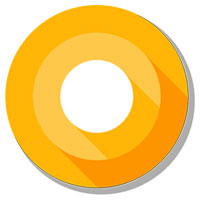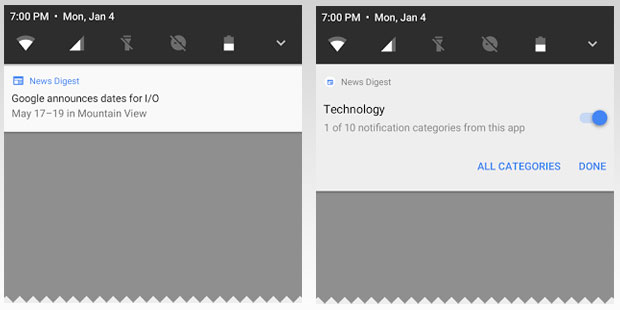
Google on Tuesday unveiled a developer preview of the latest version of its mobile operating system, codenamed “Android O.”
The new OS is designed to improve on battery life and interactive performance of devices, according to Dave Burke, vice president of engineering (Android) at Google.
The new release automatically limits what applications do in the background in three areas: implicit broadcasts, background services, and location updates.
Updated developer previews will become available in the coming months, and devs will get a more detailed look at the OS at Google I/O, to be held this May at the company’s Mountain View, Calif. headquarters.
Burke said background limits represent a significant change in how Android operates, so it’s important to give developers time to get used to the new features.
He cautioned that the release is still in its early stages, noting that additional features are in the works and plenty of stabilization and performance work needs to be completed.
“Background limits illustrate how Google is moving ahead to improve battery life on Android devices, and support for new/emerging WiFi functions and specs highlight the company’s efforts to stay on the leading edge of device connectivity,” observed Charles King, principal analyst at Pund-IT.
Another major new feature is a picture-in-picture display for phones and tablets, which allows users to watch a video while they are separately engaged in a chat session or hailing a car ride, for example.
Sound Quality
The new OS includes major improvements in connectivity, with support for LDAC, Sony’s new high-quality wireless audio via Bluetooth. Additional WiFi features include WiFi Aware, which allows WiFi access without an Internet access point, a service previously known as “Neighborhood Awareness Networking.”
The new release gives developers “fine-grained control” over various types of notifications and lets users individually block or change behaviors such as sound, vibration, or level of importance.

Notification channels let users control an app’s notification categories.
Burke noted that Google has seen a resurgence in keyboard navigation with the advent of Google Play apps on Chrome OS. The new OS, therefore, includes a feature that stabilizes arrow and tab navigation, both for developers and end users.
The O Developer Preview has an updated SDK with system images available so it can be previewed on the official Android Emulator and on Nexus 5X, Nexus 6P, Nexus Player, Pixel, Pixel XL, and Pixel C. An emulator is also available for wearables, including Android Wear 2.0 and Android O.
![]()
![]()
Adaptive icons are displayed in a variety of shapes across different device models.
The initial release is not available for consumer use, and is available only via manual download and flash, Google said.
As the final release date draws closer, Google will open up consumer enrollments through Android Beta.
While most of the features are designed to ease developer processes, features like support for picture-in-picture are aimed at improving the user experience, Pund-IT’s King told LinuxInsider.
Google’s objective, in part, is to boost the level of consumer acceptance of the new OS, King said, noting that the latest Android version, Nougat, is installed only on a small fraction of Android devices. Two-thirds of Android devices are running Android 6.0 or earlier versions, by some estimates.
App Innovations Ahead?
Google is pushing hard to gain consumer acceptance, as only 3 percent of Android devices are running Nougat and only 31 percent are running Marshmallow, said Karol Severin, an analyst at Midia Research. Older operating systems account for the remaining share of the market.
The early announcement will give the developers some time to make sure they can build apps with additional functionality and make sure older apps are running smoothly on the new OS, Severin said.
“Google will be making sure that its own devices get the updates fast,” he told LinuxInsider. “If the OS is received well within the Google device community, it can either differentiate its user experience from lagging Android handset manufacturers and win some smartphone market share in the process, or it will act as a nudge to other handset manufacturers to speed up their OS update processes.”





















































First off why would anyone get excited about another Android OS release when only 3% have gotten Nougat? Seems to me what Google needs to talk about and focus on is getting more devices on same Android release. Until that happens fragmentation and disinterest in advancing Android go hand in hand as nobody develops for a OS that won’t see devices. Advancements have to come in the form of real world adoption on real devices for real users. The fragmenting of Android is not getting better. Its getting worse.